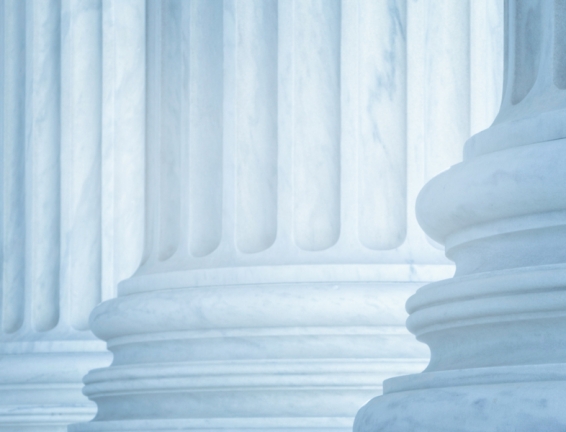Guam v. United States: U.S. Supreme Court Holding on CERCLA May Require Strategy Adjustment for Agency Settlements
The Supreme Court of the United States has resolved a circuit split on a significant issue arising under the Comprehensive Environmental Response, Compensation and Liability Act (CERCLA), 42 U.S.C. § 9601 et seq. In Guam v. United States, No. 20-382, 593 U.S. — , 2021 U.S. LEXIS 2734 (May 24, 2021) , a unanimous Court held that the Territory of Guam is not precluded from bringing a CERCLA claim against the United States merely because it had previously entered a settlement with the United States under the Clean Water Act in 2004, more than three years prior to initiating its CERCLA suit.
This resolves a circuit split in the Courts of Appeals as to whether settlements that do not explicitly resolve CERCLA liability can start the clock for filing a contribution claim under §113 of CERCLA. Four circuits found that non-CERCLA settlements do trigger a §113 contribution claim, but the Supreme Court agreed with the Second Circuit and held that they do not.
The dispute between the Territory of Guam and the United States centers on the large Ordot Landfill Superfund site in the center of the island of Guam.
The dump was constructed for the use of the United States Navy in the 1940s and later used by Guam, primarily as a municipal landfill, after the United States ceded ownership to the territorial government. In the 1990s, the U.S. Environmental Protection Agency (EPA) deemed the Ordot site an ecological hazard. After Guam then allegedly failed to comply with the EPA’s directives, the United States sued Guam under the Clean Water Act. The parties settled that suit in 2004, entering a consent decree in which Guam committed to pay a civil penalty and complete closure and capping activities at the site.
In 2017, Guam filed suit against the United States under CERCLA, arguing that the federal government was liable for a share of the environmental response costs at the site as an owner and operator at the time hazardous wastes associated with U.S. military operations were disposed. The United States asserted a statute of limitations defense, arguing that the 2004 consent decree was a settlement agreement that resolved Guam’s liability to the United States for a response action at the site, and this triggered a §113 contribution claim, which had to be brought within three years of the settlement, or by 2007.
CERCLA provides a contribution action for “a person who has resolved its liability to the United States . . . for some or all of a response action.” §113(f)(3)(B). Guam argued that this resolution of liability must be specific to CERCLA in order to trigger a contribution action. The United States argued that the “resolution of liability” in §113(f)(3)(B) is not specific to CERCLA and can include other “response actions” including under the Clean Water Act. Accordingly, Guam had to bring its contribution claim within three years of the consent decree, but failed to do so.
The District Court rejected the United States’ argument and denied its motion to dismiss. On appeal the U.S. Court of Appeals for the D.C. Circuit found that the resolution of liability need not be CERLCA-specific to trigger a contribution action under §113(f)(3)(B). The Court of Appeals reversed and remanded with instructions to dismiss the complaint. Other Courts of Appeals have agreed with the D.C. Circuit on this point, including the Seventh Circuit. See Refined Metals Corp. v. NL Industries Inc., 937 F.3d 928 (7th Cir. 2019).
The Supreme Court disagreed with these cases, reversing the D.C. Circuit (and by extension, overruling the Seventh Circuit and three other circuits). Justice Thomas, writing for a unanimous Court, found that “the most natural reading” of CERCLA is that a settlement must resolve a CERCLA liability to trigger a contribution action under §113(f)(3)(B). Accordingly, the United States’ statute of limitations defense citing the 2004 consent decree failed. The Court rejected the United States’ technical arguments regarding statutory interpretation, emphasizing the need to analyze the “totality” of subsection 113(f) and read certain phrases as internal referents to CERCLA, even where this language was not explicit.
Notably, the Court did not need to reach the second issue presented—whether a settlement that expressly disclaims any liability determination and leaves the settling party exposed to future liability can trigger a contribution claim under §113(f)(3)(B). However, Justice Thomas’ opinion provided an indication as to how the Court would have ruled on it:
“Perhaps more important, the Government’s interpretation would place undue stress on the word ‘resolve.’ This term conveys certainty and finality. See Webster’s Third New International Dictionary 1933 (1986) (‘make clear or certain’); American Heritage Dictionary 1107 (1981) (‘remove or dispel (doubts); . . . bring to a conclusion’). It would be rather odd to say that a party has ‘resolved its liability’ if that party remains vulnerable to a CERCLA suit.”
The case also leaves open the question of whether settlements that address liability under state laws that incorporate CERCLA provisions by reference would be viewed differently and could trigger a §113 claim.
The case will now return to the D.C. District Court for further proceedings.
Environmental practitioners and their clients will need to alter their settlement strategies to take account of this ruling. Whereas responsible parties in recent years have generally sought to seek the broadest scope of release in settlements with regulators, it may now be more advantageous to carve out CERCLA liability from those agreements. In other instances, the value of protection from a CERCLA suit by the government may still outweigh the need to bring §113 claims within three years of the settlement.
Categorized: News

